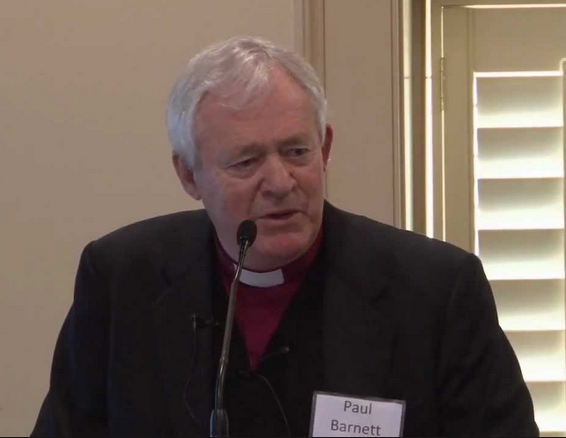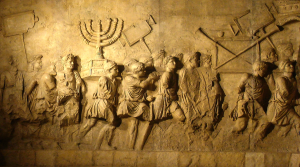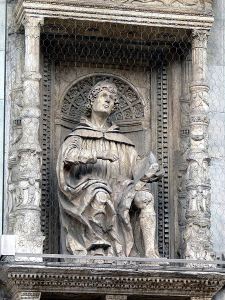I have revised 18th January to include a comparison with Doherty’s treatment of Tacitus.
By now we’re getting the picture.
Bruce writes:
Pilate’s execution of Christ, and any report that he may have sent to Rome about it, would never have been heard of again, if in fact that execution had put an end to the movement which Christ began. (p.23)
If the aim of Bruce here is to offer independent evidence of the existence of the historical Jesus this logic here is of course entirely circular. He is arguing that because Jesus existed and started the Christian movement that spread like wildfire to Rome then this is evidence that Rome’s “police” would have kept records that they would not normally have kept, and that Tacitus would have used these! No hint that this passage of Tacitus (ca.115-117 c.e.) implicating the Christians in the Fire of Rome in Nero’s reign (64 c.e.) raises more questions and problems, if indeed historical, than one can throw matches at.
But Bruce does belie some sense that he is aware of the circularity and hollowness of his argument since he goes on to cover himself with the most tentative “perhaps”, “possiblies”, “who knows?”, “would have”, “if indeeds”:
[W]here did [Tacitus] go [for his information]? To some official record, perhaps — possibly to Pilate’s report; who knows? Tacitus had an official stnading which would give him access to such archives, if indeed they survived to his day.(p.23)
Pilate, he concedes, is not mentioned in any other pagan document known to us, thus underscoring further the complete unlikeliness that Tacitus would indeed have found such records in Rome in his day. This passage, he admits, is a most unlikely one — one based on “records” that would not normally make their way to Rome. Rather than prompt other questions of historical evidence and alternative explanations this “unlikely” fact (and a fact that assumes the historical existence of Jesus that this passage is meant to be supplying additional evidence for) merely increases the dramatic irony in Bruce’s eyes.
Why does Bruce insist that these admittedly unlikely police records had to have been Tacitus’ source? Because, he explains,
from the contemptuous and hostile tone which he adopts towards the Christians, we may gather that he did not seek his information from them. (p.23)
One would not have thought a historian had to be on friendly terms with Christians to have had some knowledge of their claims and beliefs. Such assertions by Bruce indicate a naivety about methods historical that surely place his book more comfortably among other confessional writings for the choir.
Compare Bruce’s and Doherty’s discussions of Tacitus
While Bruce treats Tacitus as “a source” Doherty seeks for the source that Tacitus himself used.
While Bruce is content to repeat the Eusebian model of Church history (fanning out with spirit-like rapidity throughout the empire from the time of Jesus’ death), Doherty makes note of the fact that modern historians are being forced to limit the initial impact of Jesus given, amongst other factors, the degree of silence about Jesus in the contemporary record. This silence makes it even less likely that Tacitus ever had bureaucratric records of any particular one of countless thousands of crucifixions and executions benighting the empire decades earlier.
While Bruce is content to assume that Tacitus searched police records for his information about Jesus (on the grounds that this is the only alternative given that his unfriendly tone tells him he could not have been informed by Christians themselves), Doherty notes that Tacitus was not in the habit of consulting original documents. In support of this is the fact that Tacitus gets Pilate’s title wrong. This, of course, ought to have informed Bruce that he was being too cavalier in his discussion.
Doherty’s suggestion that Tacitus’s source was most likely picked up directly or more likely indirectly from what Christians themselves were saying in his time is by far more economical than Bruce’s presumptions of what Doherty says would have been an unheard of scale of record-keeping even for the Romans. Doherty leaves it open whether the information derived from Roman Christians or those in the province of Asia where Tacitus had earlier governed.
Conclusion:
Bruce’s conclusion is that this passage from Tacitus presents history with “an irony” — so notable that it places the sole reference of a pagan writer to Pilate in a “hand to hand” moment with “the ancient Christian creed: ‘. . . suffered under Pontius Pilate’.” It does truly appear that Bruce’s interest in dramatic presentation of his confessional interest has caused him to view this passage from but a single — apologetic — view.
Again, there is no discussion of the historical problems involved (except to express the unlikelihood of such records normally existing in Rome). No explanation — not even any mention of — the silence of the early Church Fathers on this record. It does not do to say that an “argument from silence” in this case means anything since the arguments for and against the silence of the Josephan TF among early Church Fathers are admitted as vital in many scholarly discussions. It is unthinkable that there could be no references to this passage of a presumably most salient historical event among those early Christians given their regular cravings for all records, good and bad, of the treatment of early Christians. Doherty discusses this aspect persuasively and in depth.
But in this case it is not only the silence of the early church writers that begs for explanation. It is also the correspondence only 50 years later between emperor Trajan and his governor Pliny — neither Roman official knows of any precedent for how to handle Christians! And they were in ignorance just 50 years after Christians were slaughtered by imperial edict over the fire that destroyed a third of Rome? Yeh, right!
Like this:
Like Loading...
 In vain have I posted here and on other online discussion groups my complaint that there is simply no evidence for any of these figures in the time of Jesus, but that the only reason it is believed that such movements dotted the landscape in his time is by inferring that the zealots and prophets who appeared later (or in one case a generation earlier) were indicative of what must have being happening around the 20s and 30s CE — despite the silence in the record.
In vain have I posted here and on other online discussion groups my complaint that there is simply no evidence for any of these figures in the time of Jesus, but that the only reason it is believed that such movements dotted the landscape in his time is by inferring that the zealots and prophets who appeared later (or in one case a generation earlier) were indicative of what must have being happening around the 20s and 30s CE — despite the silence in the record.


